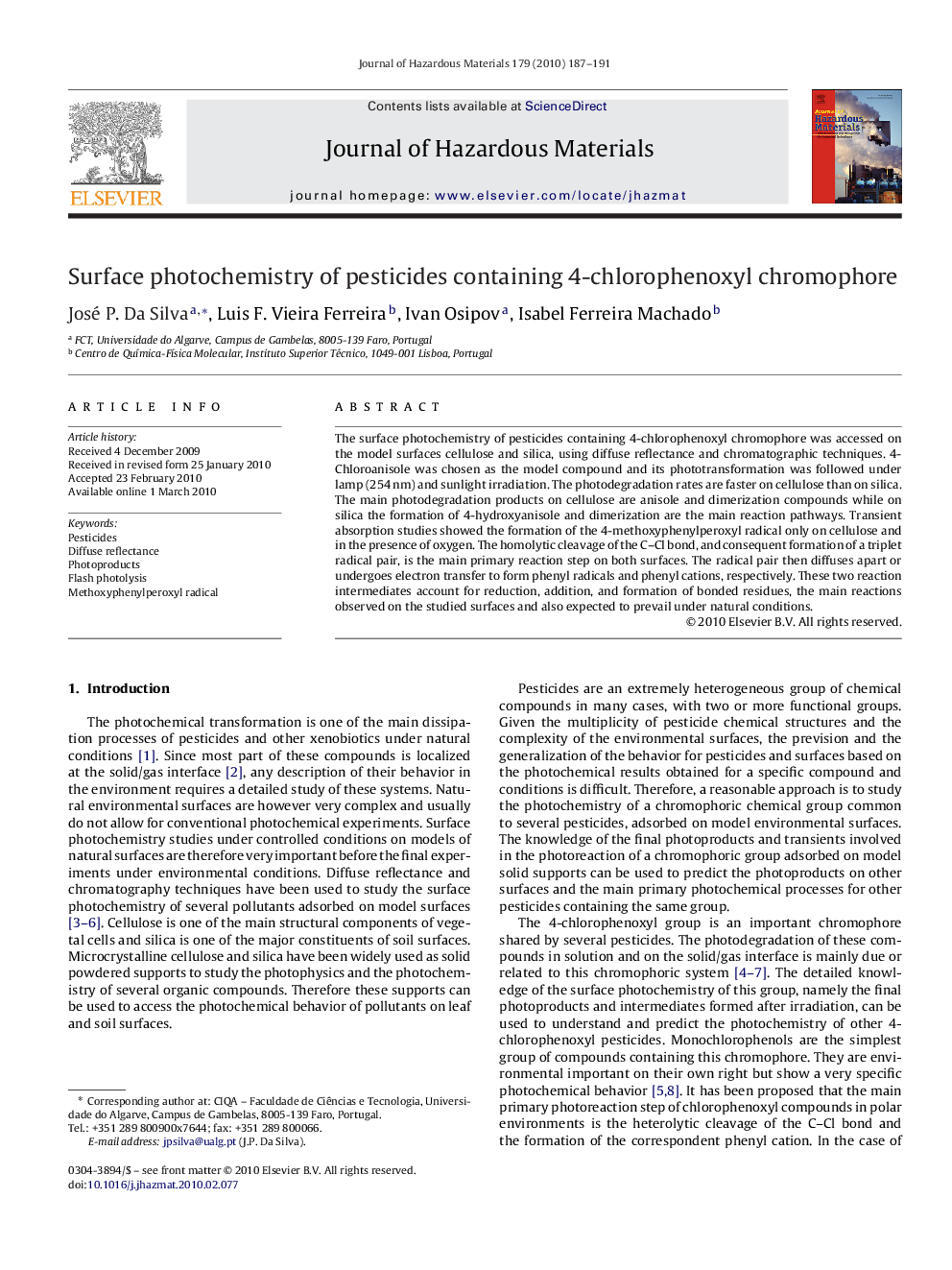| Article ID | Journal | Published Year | Pages | File Type |
|---|---|---|---|---|
| 580352 | Journal of Hazardous Materials | 2010 | 5 Pages |
Abstract
The surface photochemistry of pesticides containing 4-chlorophenoxyl chromophore was accessed on the model surfaces cellulose and silica, using diffuse reflectance and chromatographic techniques. 4-Chloroanisole was chosen as the model compound and its phototransformation was followed under lamp (254Â nm) and sunlight irradiation. The photodegradation rates are faster on cellulose than on silica. The main photodegradation products on cellulose are anisole and dimerization compounds while on silica the formation of 4-hydroxyanisole and dimerization are the main reaction pathways. Transient absorption studies showed the formation of the 4-methoxyphenylperoxyl radical only on cellulose and in the presence of oxygen. The homolytic cleavage of the C-Cl bond, and consequent formation of a triplet radical pair, is the main primary reaction step on both surfaces. The radical pair then diffuses apart or undergoes electron transfer to form phenyl radicals and phenyl cations, respectively. These two reaction intermediates account for reduction, addition, and formation of bonded residues, the main reactions observed on the studied surfaces and also expected to prevail under natural conditions.
Related Topics
Physical Sciences and Engineering
Chemical Engineering
Chemical Health and Safety
Authors
José P. Da Silva, Luis F. Vieira Ferreira, Ivan Osipov, Isabel Ferreira Machado,
